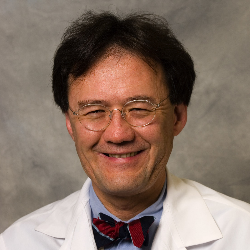 Forums
Forums
The Cure for Myeloma
How could institutes as the IMBCR or the UAMS speak from a cure, or a cure project (the cure-control-debate)? It is an unfortunate fact that relapsed or refractory myeloma could not be controlled yet and the "time to progression" is often not longer than half a year in pretreated patiens. Do you think, that's just marketing? And if not: What are the milestones in the next three years for myeloma research to a real disease-control? What timing do you see here? Dr. Rajkumar said: We're close. Close - what does that mean?
Re: The Cure for Myeloma
Dear Dr. McCarthy, I have a question regarding chemotherapy and allo transplant. While the new agents are at the centre of the discussion, are there probably new approaches in chemotherapy to eredicate the remaining myeloma cells? I heard from an artificial trial in switzerland (vaccination), where they tried to gat an effect through T-Cells. Or take that vaccine trial form 2009 that showed promise* Thank you, Patrizia Veglianti
*Blood, 29 October 2009, Vol. 114, No. 18, pp. 3880-3889.Myeloma cell line-derived, pooled heat shock proteins as a universal vaccine for immunotherapy of multiple myeloma
*Blood, 29 October 2009, Vol. 114, No. 18, pp. 3880-3889.Myeloma cell line-derived, pooled heat shock proteins as a universal vaccine for immunotherapy of multiple myeloma
Re: The Cure for Myeloma
Hi,
This response is for Patrizia Veglianti and Peter Parker.
There are a variety therapies that use vaccination, T cells, dendritic cells, toll-like receptor agonists and immunomodulatory cytokines which have been or will be tested in clinical trials. So, this remains a work in progress. With regard to allotransplant, it is not certain if this will be the longterm approach for many patients. It can be considered for high risk patients as mentioned in another post (4:14, del 13, del 17) but is complicated by toxicity. It may be more reasonable to consider allo transplant for those who fail an upfront autotransplant. A major goal of allo transplant is to reduce the treatment related mortality.
With regard to cure, this remains a goal of most if not all multiple myeloma investigators. We cannot say we are there yet. Interestinglly IMBCR and UAMS approach treatment very differently. The IMBCR Is not transplant oriented whereas the UAMS is. So, many investigators look for the best way to diagnose, treat and control and hopefully cure this disease. Of note, identifying risk factors for progression and relapse is very important so as to determine which patients are in need of more investigational approaches to long term disease control. Of note, when I was a medical student back in 1982, the median survival for multiple myeloma requiring therapy was 3 years (of 100 multiple myeloma patients, 50 would have died within 3 years after starting therapy). Now the median time to progression is around 2 years following single autotransplant and nearly 3.5 years with lenalidomide maintenance. The median survival can be beyond 7 years depending on the trials and patient populations. While this is not great, it is progress. I think the new milestones will be: How does transplant fit in as part of the upfront therapy? How will new agents such as carfilzomib, pomalidomide, vorinostat, etc will figure into induction regimens? Can the high risk patients become low risk patient with use of the new agents? If multiple myeloma is not curable yet, can it become a "chronic" disease with patients maintaining a good quality of life on maintenance or lower dose therapy?
This response is for Patrizia Veglianti and Peter Parker.
There are a variety therapies that use vaccination, T cells, dendritic cells, toll-like receptor agonists and immunomodulatory cytokines which have been or will be tested in clinical trials. So, this remains a work in progress. With regard to allotransplant, it is not certain if this will be the longterm approach for many patients. It can be considered for high risk patients as mentioned in another post (4:14, del 13, del 17) but is complicated by toxicity. It may be more reasonable to consider allo transplant for those who fail an upfront autotransplant. A major goal of allo transplant is to reduce the treatment related mortality.
With regard to cure, this remains a goal of most if not all multiple myeloma investigators. We cannot say we are there yet. Interestinglly IMBCR and UAMS approach treatment very differently. The IMBCR Is not transplant oriented whereas the UAMS is. So, many investigators look for the best way to diagnose, treat and control and hopefully cure this disease. Of note, identifying risk factors for progression and relapse is very important so as to determine which patients are in need of more investigational approaches to long term disease control. Of note, when I was a medical student back in 1982, the median survival for multiple myeloma requiring therapy was 3 years (of 100 multiple myeloma patients, 50 would have died within 3 years after starting therapy). Now the median time to progression is around 2 years following single autotransplant and nearly 3.5 years with lenalidomide maintenance. The median survival can be beyond 7 years depending on the trials and patient populations. While this is not great, it is progress. I think the new milestones will be: How does transplant fit in as part of the upfront therapy? How will new agents such as carfilzomib, pomalidomide, vorinostat, etc will figure into induction regimens? Can the high risk patients become low risk patient with use of the new agents? If multiple myeloma is not curable yet, can it become a "chronic" disease with patients maintaining a good quality of life on maintenance or lower dose therapy?
-

Dr. Philip McCarthy - Name: Philip McCarthy Jr., M.D.
3 posts
• Page 1 of 1
Return to Treatments & Side Effects
